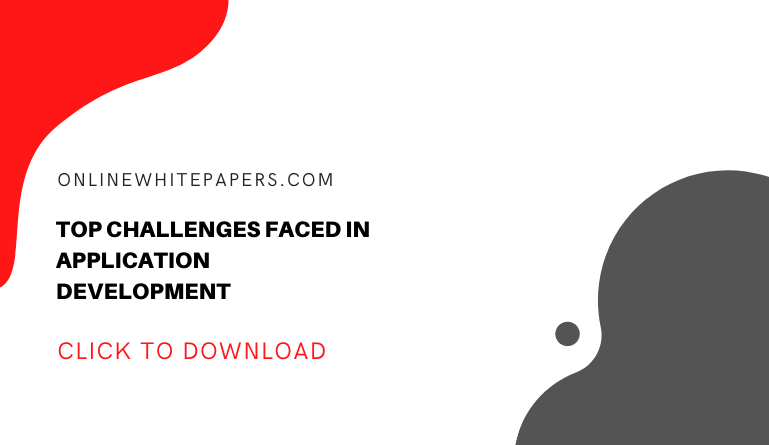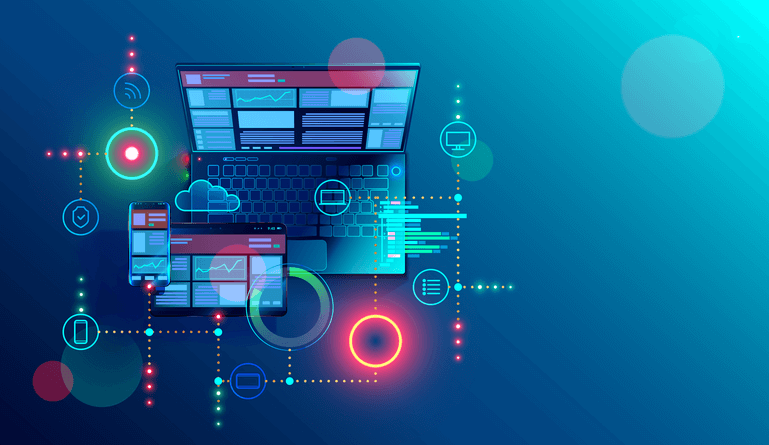What is Application Development? – A Complete Guide
February 7, 2023
Organizations worldwide are transforming their business growth by using software applications. IT software plays a vital role in transforming users’ experiences, creating new revenue channels, making businesses more innovative, and reaching a wider audience. To benefit from the availability of web-based applications, developers and maintainers must have a strategy that aligns with the needs of their organizations.
What is Application Development?
Application development is the process of developing computer programs to accomplish a variety of tasks a company may need. Businesses use applications to automate processes and increase efficiency in a variety of ways, from calculating monthly expenses to scheduling sales reports. An app’s development follows these steps: gather requirements, create prototypes, test, implement, and integrate.
Application software is something we all depend on every day
- Editing texts
- Worksheets
- For the creation of websites
- Recording videos and podcasts
- Sending and receiving emails
- With a media player
- Displaying graphic images
(Also Read: A Guide to the Application Development Life Cycle (ALM)
Key Benefits of Application Development
Managing an application portfolio effectively is possible with robust application development and maintenance.
Below are some benefits :
- Custom applications are in high demand – applications that provide scalability, security, and easy maintenance
- In addition to executing proven deployment techniques that maximize IT solutions, enterprises can ensure future business continuity and efficiency
- Applications are developed, tested, deployed, maintained, and enhanced across several engagement models
- Support and extend quality practices in key industry sectors with expertise and domain experience
Disadvantages of Rapid Application Development
There are still some disadvantages to RAD compared to other, older methods.
- Larger projects: Although RAD is great for fast turnaround; the regularly changing nature of requirements could hinder some larger projects.
- Needs regular feedback: User feedback is a must for rapid application development, which could impact the worth of the solution.
- Needs modularity: You can only apply it to software systems that can be modularized into small components.
- Needs high skills: Its success depends on the ability of developers to provide precise work.
- Requires constant user involvement: RAD model requires continuous user feedback to improve on prototypes.

Types of Application Development
-
Waterfall application development
This waterfall methods are planning and sequence. Plans and analyses map out the entire project. The customer provides detailed specifications for the application. Once this is done, a project manager maps it all out for the team.
-
Rapid application development (RAD)
Using this waterfall method presented several challenges as you might expect. In the past, it often took a long time to produce a working product, teams had to be large to satisfy customers’ requirements, and tensions sometimes ran high when customers were unhappy with the result, so they had to relaunch the project.
-
Agile application development
In comparison with RAD, Agile AD incorporates some changes to address the needs of larger projects. In Agile, features are built one at a time, like in RAD. Each new feature is developed in the team, but before the next one is developed, the customer sees the existing ones and signs off on them.
Best Practices for Successful Application Development
- Choose a partner with experience: It is possible to create and maintain high-quality applications with the help of an application development partner.
- Team training: Training your team around new applications and existing application updates will allow you to deliver the best results.
- Strategize in writing: Document and distribute fully your strategies to ensure all parties are on the same page.
- UX testing: For an application to succeed, the user experience must be excellent.
- Maintain compliance: To avoid penalties, make sure you stay up-to-date on applicable regulations, procedures, and methods.
- Communicate: It is important to communicate, particularly if you’re using an external application partner.
- Adapt and be flexible: The application should fit your organizational structure, market, and finances.
Examples of Application Development
Efficient architecture and intuitive user interface have become major requirements when creating applications because the expectations of users are more intensified. Today, it covers various enterprise systems, for example, marketing technology software, data management solutions, cloud-based mobile apps that use IoT, and so on.
Tips for a Successful Application Development
- Be very clear about your requirements
- Fully understand the services provided by application development companies
- Assess all the development platforms and select the one that best fits your business needs
- Ensure you embed the processes that focus on regular improvements
- Prioritize on security
- Constantly update and test your application
The Future of Application Development
There are various trends in the maintenance landscape, they include:
- Security practices will now be implemented as a code, rather than at a post-development stage
- Cloud implementations will become a common way of meeting the needs of users
- Automation will enable companies to incorporate tools
- Innovative technologies will be readily available at an affordable rate
Final Thoughts
The integration of technological developments can improve application development. It is also a good investment that can give your company a high return and take your business to the next level irrespective of its size.

